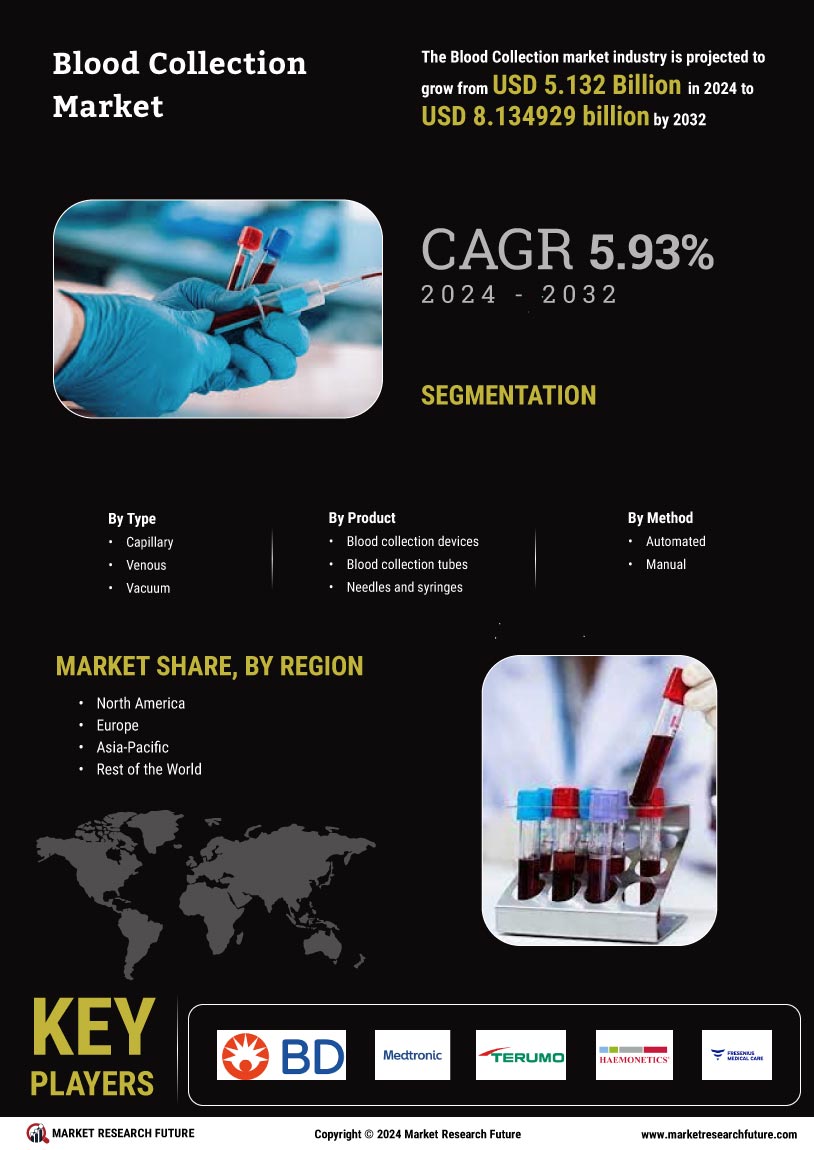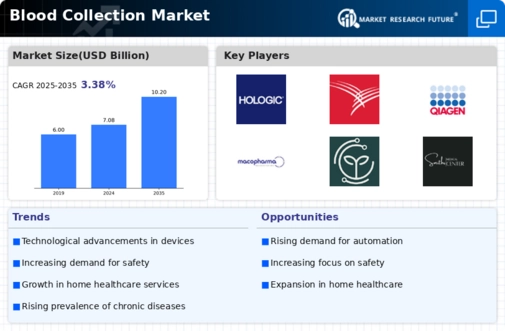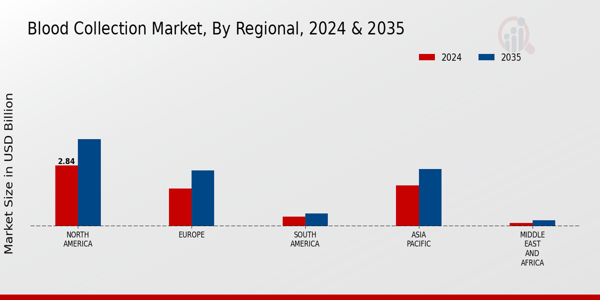Market Growth Projections
The Global Blood Collection Market Industry is poised for substantial growth, with projections indicating a market value of 7.08 USD Billion in 2024 and an anticipated increase to 10.2 USD Billion by 2035. This growth trajectory reflects a compound annual growth rate (CAGR) of 3.37% from 2025 to 2035. Various factors contribute to this upward trend, including technological advancements, increasing demand for blood products, and supportive government initiatives. As the market evolves, it is essential to monitor these growth projections closely, as they provide valuable insights into the future landscape of blood collection.
Rising Demand for Blood Products
The Global Blood Collection Market Industry experiences a notable increase in demand for blood products, driven by a growing prevalence of chronic diseases and surgical procedures. As healthcare systems worldwide prioritize blood safety and availability, the market is projected to reach 7.08 USD Billion in 2024. This surge is attributed to the expanding patient population requiring transfusions and the rising awareness of blood donation's importance. Furthermore, advancements in blood collection technologies enhance efficiency and safety, thereby encouraging more individuals to donate blood. The increasing need for blood products is likely to propel the market further, indicating a robust growth trajectory.
Government Initiatives and Support
Government initiatives play a pivotal role in shaping the Global Blood Collection Market Industry. Various countries implement policies aimed at promoting voluntary blood donation and ensuring the availability of safe blood products. For example, national blood donation campaigns and funding for blood collection infrastructure enhance public awareness and participation. These initiatives are essential in addressing the increasing demand for blood products, particularly in regions with limited access to healthcare. As governments continue to invest in blood collection programs, the market is likely to benefit from improved collection rates and enhanced safety standards, contributing to its overall growth.
Increasing Awareness of Blood Donation
The Global Blood Collection Market Industry is significantly influenced by the rising awareness of blood donation's importance. Educational campaigns and community outreach programs aim to inform the public about the critical need for blood donations, especially during emergencies and natural disasters. This heightened awareness is likely to lead to increased donor participation, thereby boosting the availability of blood products. As more individuals recognize the impact of their contributions, the market is expected to grow, aligning with the projected increase in demand for blood products. The collective efforts to promote blood donation are essential for sustaining the market's growth trajectory.
Technological Advancements in Blood Collection
Innovations in blood collection technologies significantly influence the Global Blood Collection Market Industry. The introduction of automated blood collection systems and advanced blood bags enhances the efficiency and safety of the collection process. For instance, the adoption of closed blood collection systems minimizes contamination risks, which is crucial for maintaining blood quality. As these technologies evolve, they not only streamline operations but also improve donor experience, potentially leading to increased donation rates. The market's growth is further supported by the anticipated CAGR of 3.37% from 2025 to 2035, reflecting the ongoing commitment to enhancing blood collection methodologies.
Emerging Markets and Healthcare Infrastructure Development
Emerging markets present substantial opportunities for the Global Blood Collection Market Industry, particularly as healthcare infrastructure continues to develop. Countries in Asia and Africa are witnessing improvements in their healthcare systems, leading to increased access to blood collection services. As these regions enhance their medical facilities and blood banks, the demand for blood collection products is likely to rise. This growth is further supported by the anticipated market expansion, with projections indicating a market value of 10.2 USD Billion by 2035. The ongoing development of healthcare infrastructure in emerging markets is crucial for meeting the rising demand for blood products.


















Leave a Comment